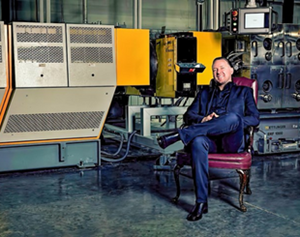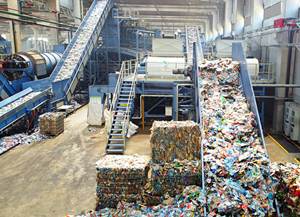Unilever Introduces Process to Recycle Multilayer Sachets
Plastics from the post-consumer sachets will be channeled back into the supply chain.
A major brand is once taking on a big initiative toward reducing plastic waste: Unilever announced it is working with partners on a new technology to recycle sachets (aka multi-layer flexible packaging consisting of a thin film of plastic and aluminum). Called the CreaSolv Process, this technology has been developed with the Fraunhofer Institute for Process Engineering and Packaging IVV in Germany and is inspired by an innovation used to recycle TV sets.
Billions of single-use sachets are sold every year, particularly in developing and emerging markets. But without a viable recycling solution, the packaging ends up in landfill or as litter.
The CreaSolv Process technology has been adapted from a method used to separate brominated flame retardants from waste electrical and electronic equipment polymers. During the process, the plastic is recovered from the sachet, and then reapplied in the creation of new sachets for Unilever products.
To tackle the industry-wide sachet waste issue, Unilever is looking to create a sustainable system change by setting up waste collection schemes to channel the sachets towards recycling. Currently, Unilever is testing this by working with local waste banks, governments and retailers. It will also look to empower waste pickers, integrating them into the mainstream economy and providing them potential long-term income.
Unilever will open a pilot plant in Indonesia later this year to test the long-term commercial viability of the technology. Indonesia, is a critical country in which to tackle the waste, as it produces 64 million metric tons every year, with 1.3 million metric tons ending up in the ocean.
David Blanchard, chief R&D officer at Unilever, said that at the start of this year, the company made a commitment to help solve this problem by developing new recycling technologies. The company intends to make the technology open source, with hopes to scale it up with industry partners, so that in the end, others—including its competitors—can use it.
“There is a clear economic case for delivering this,” he stated. “We know that globally $80-120 billion is lost to the economy through failing to properly recycle plastics each year. Finding a solution represents a huge opportunity. We believe that our commitment to making 100% of our packaging recyclable, reusable or compostable will support the long-term growth of our business.”
This announcement is part of Unilever’s pledge to ensure all of its plastic packaging is fully reusable, recyclable or compostable by 2025.
Andreas Mäurer, department head of plastic recycling at the Fraunhofer IVV stated:
"With this innovative pilot plant we can, for the first time ever, recycle high-value polymers from dirty, post-consumer, multi-layer sachets. Our aim is to prove the economic profitability and environmental benefits of the CreaSolv Process. Our calculations indicate that we are able to recover six kilos of pure polymers with the same energy effort as the production of one kilo of virgin polymer."
According to Fraunhofer IVV, the plastics that are recycled from contaminated mixtures or composite materials have properties equivalent to those of the virgin plastics.
The 3 main steps in the process are:
- Dissolution of the target plastic using a selective solvent; other components in the waste fraction remain undissolved;
- Separation of contaminants from the recovered polymer solution;
- Precipitation of the target plastic from the purified polymer solution.

Related Content
Compatibilizers Aid Recycling & Upcycling of Mixed Resins
Compatibilizers are proving their worth in boosting critical properties such as impact/stiffness balance of PCR and PIR blends of polyolefins and other plastics.
Read MoreA Recycling Plant, Renewed
Reinvention is essential at Capital Polymers, a toll recycler that has completely transformed its operation in a short period of time.
Read MoreHot Wash Systems for Recycling Polyolefins
Herbold can configure wash plants for polyolefins that can produce high-quality, food-grade recyclates.
Read MoreAvoid Four Common Traps In Granulation
Today, more than ever, granulation is an important step in the total production process. Our expert explains a few of the many common traps to avoid when thinking about granulators
Read MoreRead Next
Why (and What) You Need to Dry
Other than polyolefins, almost every other polymer exhibits some level of polarity and therefore can absorb a certain amount of moisture from the atmosphere. Here’s a look at some of these materials, and what needs to be done to dry them.
Read MoreTroubleshooting Screw and Barrel Wear in Extrusion
Extruder screws and barrels will wear over time. If you are seeing a reduction in specific rate and higher discharge temperatures, wear is the likely culprit.
Read MorePeople 4.0 – How to Get Buy-In from Your Staff for Industry 4.0 Systems
Implementing a production monitoring system as the foundation of a ‘smart factory’ is about integrating people with new technology as much as it is about integrating machines and computers. Here are tips from a company that has gone through the process.
Read More















.png;maxWidth=300;quality=90)










